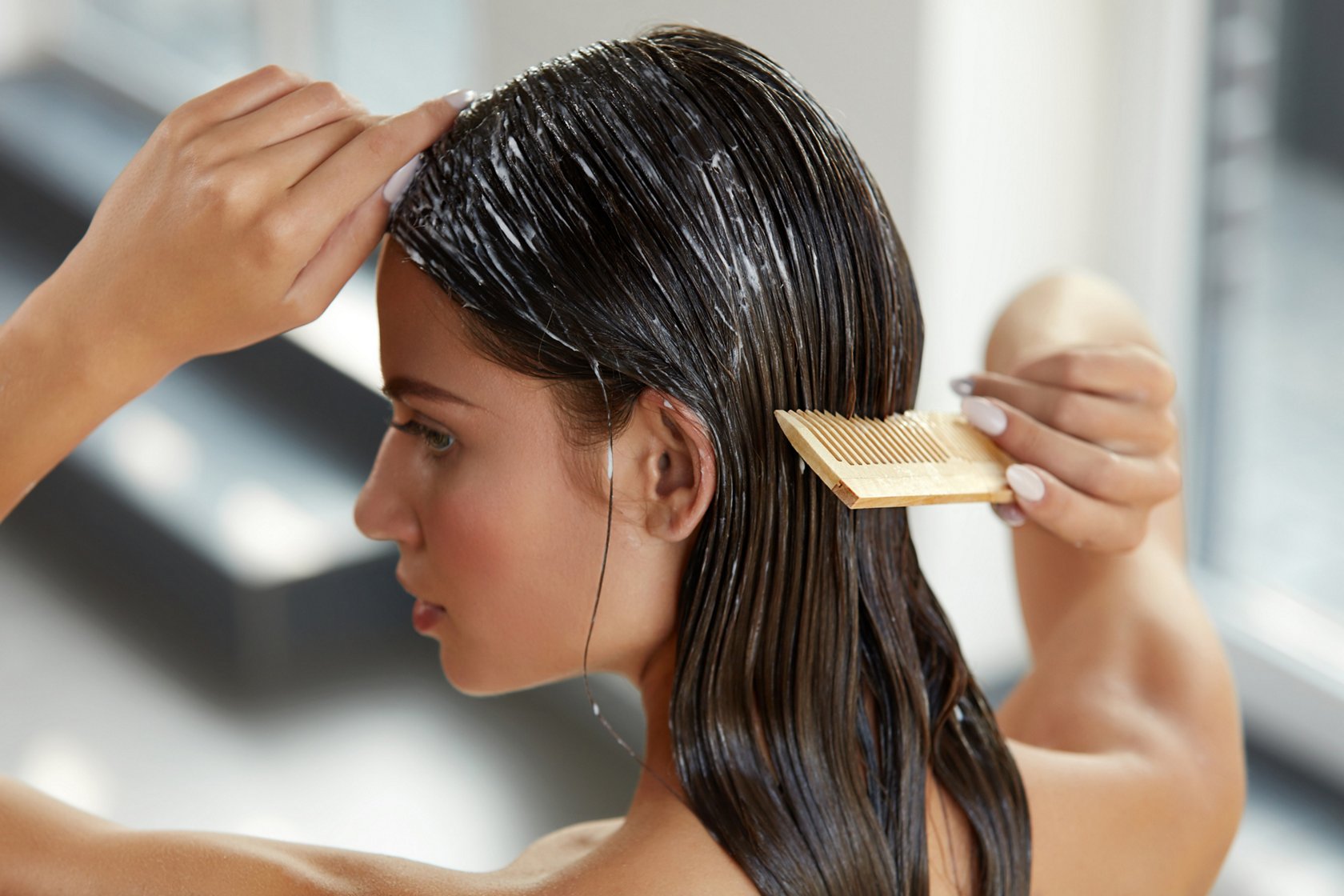A deep conditioning treatment can infuse extra moisture into your hair and help prevent moisture loss. Many specialists suggest deep conditioning weekly for a lot of people, though the ideal frequency depends on your hair type.
If your hair is dry, a deep conditioning treatment may be the solution for softer, more manageable locks.
“Dry hair lacks moisture from outside sources and from internal sebum, or oil, production,” says Deanne Mraz Robinson, MD, FAAD, president and co-founder of Modern Dermatology and an assistant clinical professor of dermatology at Yale New Haven Hospital.
Below is what you should know to pick the appropriate deep conditioner and maintain moisturized hair.

What causes hair to be dry
Your hair’s moisture content is influenced by how much sebum the sebaceous glands in your hair follicles produce. Sebum is an oil that lubricates the skin, scalp, and hair.
The amount of sebum produced by the scalp differs between individuals and changes over time. It’s affected by age, hormones, stress, and environmental factors, Mraz Robinson explains.
Your hair can also feel drier after lightening, because bleaching opens up strands and depletes melanin (pigment).
“This can leave strands dry, porous, and brittle,” Mraz Robinson says.
Heat styling also contributes to dryness — if you frequently use a blow-dryer or curling iron, consider adding deep conditioning into your hair-care routine.
What are deep conditioners?
All conditioners include a couple of fundamental ingredient types:
- Humectants. These attract and bind water, adding moisture to hair.
- Emollients. Often called moisturizers, these soften hair and limit moisture loss by forming a protective layer around strands.
Deep conditioners have higher levels of emollients and humectants than everyday conditioners, Mraz Robinson says. They’re also left on the hair much longer: about 20 to 30 minutes rather than 2 or 3 minutes.
“Deep conditioners will have a thicker, heavier formula,” Mraz Robinson notes. “They may also keep working for days after use, as they’re designed to penetrate the strand more deeply than surface-smoothing daily conditioners.”
The advantages of deep conditioning
Both regular conditioners and deep treatments improve the look of hair. However, deep conditioners produce more noticeable results. They can:
- detangle
- reduce frizz
- increase shine
- enhance smoothness
Who should use a deep conditioner?
Because shampoo strips sebum, the American Academy of Dermatology advises using a rinse-out conditioner after every wash.
Unless your hair is particularly oily, you’ll probably benefit from an occasional deep conditioning treatment, Mraz Robinson says.
How often you need to deep condition depends on your hair texture and how frequently you wash and use heat tools, she adds.
Generally, once a week is a sensible guideline for most people, since overdoing it can cause product buildup, Mraz Robinson warns.
Because sebum travels more easily down straighter or looser curls to lubricate them, those with tight curls might need to deep condition more frequently.
It’s also wise to deep condition before chemical services (for example, lightening, straightening, or perming).
How to deep condition at home
Mraz Robinson recommends the following steps:
- Shampoo first, only if needed. “If your scalp isn’t dirty or oily, you can rinse and skip shampoo before applying your deep conditioner,” she says.
- Apply according to your hair type. For dry hair or tight curls, you’ll likely want to apply deep conditioner close to, or up to, the roots. If your hair is oilier, apply deep conditioner from mid-shaft to ends, and use your regular conditioner nearer the scalp.
- Distribute it. Work the product through with your fingers or a wide-tooth comb to coat all strands. “Most people will want to focus on the lower part of hair, concentrating on the ends,” she notes.
- Follow timing instructions. These vary by product, so read the label. “On average, I’d recommend about 20 to 30 minutes,” she says.
- Rinse with cool water. “This helps seal the nourishing ingredients into the hair shaft.”
DIY deep conditioning mixtures
Avocado, egg, and olive oil make great homemade conditioner components, because they’re “rich in omega-3 fatty acids to repair and strengthen strands,” Mraz Robinson says.
Here are a couple of her preferred recipes.
Recipe #1
Ingredients
- 1/2 an avocado
- 1 egg
- 1 tbsp. olive oil
Directions
- Combine the ingredients with a fork or whisk.
- Apply to hair and rinse after 20 to 30 minutes with cool water.
Recipe #2
Ingredients
- 1 cup Greek yogurt
- 1/2 an avocado
- 2 tbsp. olive oil
- 1 tbsp. honey
Directions
- Blend all ingredients together.
- Apply to hair and rinse after 20 to 30 minutes with cool water.
Store-bought deep conditioners
Mraz Robinson advises seeking the following emollient ingredients in a commercial deep conditioner:
- honey
- avocado oil
- shea butter
- coconut oil
Don’t discount synthetic emollients — they may actually outperform natural oils. Examples include:
- dimethicone
- dimethiconol
- amodimethicone
- cyclomethicone
Mraz Robinson recommends these products:
- Kristin Ess Weightless Hydration Daily Scalp + Hair Mask. “It’s fairly weightless and ideal for finer, oilier hair,” she says.
- Kerastase Resistance Masque Extentioniste. “This is a cult favorite; while a mask won’t make hair grow longer, it conditions the ends so you can go longer between trims,” she says.
- Olaplex Hair Perfector No. 3 Repairing Treatment. She notes this treatment receives excellent reviews for colored hair.
Precautions
Be cautious if you have a sensitive scalp, particularly with eczema or psoriasis.
“Many of these treatments are heavily fragranced and may provoke a flare-up of your condition,” Mraz Robinson warns.
If you’re prone to acne, keep freshly conditioned hair away from your face and change your pillowcase often, she adds.
Bottom line
Deep conditioners contain higher concentrations of emollients and humectants and are left on the hair longer than daily conditioners.
Most people can use a deep conditioner about once a week. Work it through from mid-shaft to ends, leave it on for roughly 20 minutes, and rinse with cool water.
Look for ingredients like avocado oil, shea butter, and coconut oil.


















Leave a Reply
You must be logged in to post a comment.